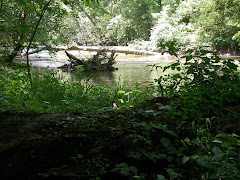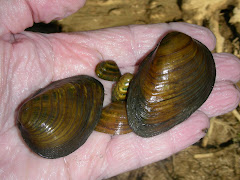With this post I will have officially completed the Columbus Library's Learn and Play program. It's been a lot of fun learning to create this blog and explore all the interesting new "things" that are going on on the web. It was an eye opening experience to find all the creative online tools to gather, organize, and share information. After going through this program I will no longer view the web as an overwhelming series of isolated sites. Rather, I see it as a vast data source that is fortunately populated by islands of coherence where I can organize my lifelong learning.
My favorite islands were:
--Bloglines, where I now get interesting feeds from favorite websites sent to me each day.
--The two map sites, Google Earth and Live Search Maps, from which I can view any spot on the planet in amazing detail.
--YouTube, where I can find an astonishing number of interesting and/or entertaining video clips.
And I'm sure I'll discover new favorites soon!
But in general the biggest thing I took away from this exercise is the understanding that the web is changing, and that old ways of using it (email, surfing, favorites, etc.) are being replaced by newer and more effective techniques. The trick is finding those islands--those organizing places on the web--where the vast chaos of the internet morphs into concrete learning.
The Columbus Public Library is to be commended for giving all of its staff--not just librarians--the push to get this exposure to Web 2.0. Now in turn we'll all be positioned to push for Library 2.0, the next generation of public libraries.
Tuesday, December 2, 2008
MOLDI, or books from your computer
Our 22nd assignment was easy: explore ebooks on the Mid Ohio Library Digital Initiative (MOLDI) offered through the CML website. There are some good books on there, from classics to biographics to novels. I'd like to use the service...as long as it is convenient. And for me, convenience isn't reading or listening to books at my computer, it's listening to them on an ipod. According to the site that isn't possible yet, so I'll have to stay tuned.
Podcasts--endless confusion.
Well, our 21st assignment is to look at podcasts. I have to admit, that this one is pretty confusing. I tried to find library or Darby related podcasts using online directories, to no avial. So I ended up subscribing to Car Talk podcasts! But at least I understand how podcasts work, how to search for them...and at least I don't have to worry about missing Car Talk any more!
Mussel video from YouTube
Next up...the most famous Web 2.0 technology, YouTube!
Here's a great video clip about freshwater mussels. It takes place in Kentucky, but it could easily be about Darby.
Here's a great video clip about freshwater mussels. It takes place in Kentucky, but it could easily be about Darby.
Worldcat
I'm up to step 18 in my 23 step process of learning about Web 2.0. This step involved exploring CML's Power Tools Page, a section of our website that exposes customers to many of the 2.0 tools we staff are learning about. One new site that I discovered is called Worldcat. The site is an online search of millions of books and other items available at libraries around the country. The site basically combines catalogs from libraries into one giant catalog. Another great idea from Web 2.0!
Another 2.0 Map site

I've come across a second great map site (in addition to Google Earth, which I posted about earlier). This one is Microsoft's Live Search Maps (http://maps.live.com/). Like Google Earth, you can scroll around maps and switch to aerial photos. But unlike GE, Live Search has a "bird's eye" view, which puts you in a view that you'd see out of a very low flying plane. The resolution is much finer than Google Earth's, and you can practically count each branch on each tree. Pretty incredible.
I'm posting a picture from the same site along Darby as the Google Earth image a few posts back, the confluence area where Little Darby (on the left) flows into Big Darby in Battelle-Darby Metro Park. Unfortunately, I couldn't find a way to post the exact bird's eye image from Live Search, so I had to settle for this lower quality aerial shot. You'll just have to take my word for it that the detail on the site is incredible!
Of particular interest in this picture is the difference in water quality between Little Darby and Big Darby. Note that Big Darby is muddy after a rain, while Little Darby is relatively clear. This illustrates how Big Darby is under increased pollution pressure, largely due to increasing development in the eastern portion of the watershed.
Joined a Wiki
Next step in my integration into the 21st century: I joined our library wiki. It was surprisingly easy to add content to the growing "book." I added this blog to our list of Favorite Blogs, and made some comments about my favorite movie and favorite leisure activity. Fluff for sure, but now I know how wikis work!
Subscribe to:
Posts (Atom)


